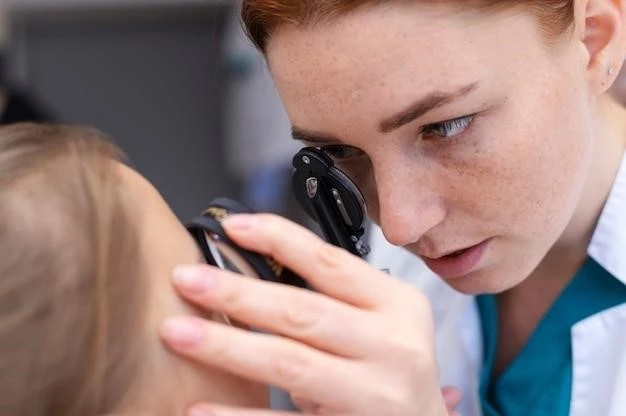Overview of Congenital Cystic Eye
Definition
The congenital cystic eye is a rare condition present at birth where a cyst forms within the eye during fetal development.
Incidence
Congenital cystic eye is an extremely rare condition, with only a few documented cases worldwide, making it a significant medical anomaly.
Causes
The exact causes of congenital cystic eye are not fully understood, but they are believed to involve genetic and environmental factors during fetal development.

Causes of Congenital Cystic Eye
Genetic Factors
Genetic mutations or abnormalities passed down from parents can contribute to the development of congenital cystic eye, highlighting the role of genetics in this condition.
Environmental Factors
Exposure to certain environmental elements during pregnancy, such as toxins or infections, may play a role in the development of congenital cystic eye, highlighting environmental influences on this condition.
Other Possible Causes
While the exact causes may vary, factors such as developmental abnormalities or disruptions in the formation of the eye structures could also contribute to the occurrence of congenital cystic eye.
Symptoms and Diagnosis of Congenital Cystic Eye
Common Symptoms
Common symptoms of congenital cystic eye may include abnormal eye size, shape, or appearance, accompanied by potential vision issues and other associated abnormalities.
Diagnostic Procedures
Diagnosing congenital cystic eye involves a thorough eye examination, imaging tests like ultrasound or MRI, genetic testing, and consultation with specialists to determine the condition accurately.
Differential Diagnosis
When evaluating congenital cystic eye, healthcare providers must differentiate it from conditions like microphthalmia, anophthalmia, or other developmental abnormalities using a combination of clinical evaluations and diagnostic tests.
Treatment Options for Congenital Cystic Eye
Surgical Interventions
Surgical treatments for congenital cystic eye may involve procedures to reduce eye size, improve cosmetic appearance, and address associated complications, aiming to enhance visual outcomes and overall eye function.
Non-Surgical Treatments
Non-surgical approaches for congenital cystic eye may involve vision therapy, low vision aids, and supportive care to manage symptoms, promote optimal visual development, and enhance quality of life for affected individuals.
Long-Term Care
Long-term care for individuals with congenital cystic eye may involve regular eye monitoring, ongoing management of visual function, and addressing any associated health issues to ensure optimal eye health and overall well-being throughout their lives.
Prognosis and Complications of Congenital Cystic Eye
Prognosis
The prognosis for congenital cystic eye varies depending on the individual’s specific case, with early detection and appropriate interventions playing a crucial role in managing outcomes and maximizing overall eye health and function.
Possible Complications
Complications of congenital cystic eye may include vision impairment, aesthetic concerns, potential eye infections, and associated systemic conditions, underscoring the importance of comprehensive management and regular monitoring to address these issues effectively.
Preventive Measures
Preventive measures for congenital cystic eye may involve genetic counseling, early prenatal care, avoiding harmful exposures during pregnancy, and regular prenatal screenings to help reduce the risk of developing this condition and address potential contributing factors proactively.
Research Advances in Congenital Cystic Eye
Current Studies
Ongoing research studies on congenital cystic eye focus on genetic mechanisms, novel treatment approaches, and improving diagnostic accuracy, aiming to enhance clinical understanding, develop targeted therapies, and ultimately improve outcomes for individuals affected by this condition.
Technological Innovations
Technological advancements in imaging techniques, genetic testing, and surgical tools are revolutionizing the management of congenital cystic eye, offering more precise diagnostics, personalized treatment options, and improved surgical outcomes, showcasing the potential of innovative technologies in enhancing care for affected individuals.
Potential Future Developments
Future advancements in regenerative medicine٫ gene therapy٫ and precision medicine hold promise for more targeted and innovative treatments for congenital cystic eye٫ offering potential breakthroughs in personalized care and improving outcomes for individuals affected by this rare condition.
Support and Resources for Individuals with Congenital Cystic Eye
Support Groups
Support groups for individuals with congenital cystic eye provide a platform for sharing experiences, emotional support, and valuable information, fostering a sense of community and connection among those affected by this rare eye condition.
Educational Materials
Educational materials on congenital cystic eye offer valuable insights into the condition, treatment options, and lifestyle management, empowering individuals with knowledge and resources to make informed decisions and navigate their eye health journey effectively.
Counseling Services
Counseling services for individuals with congenital cystic eye offer emotional support, coping strategies, and guidance to navigate challenges, promote mental well-being, and address the psychosocial aspects of living with a rare eye condition.
Social Impact
Congenital cystic eye can impact social interactions, self-esteem, and daily activities, emphasizing the importance of social support, inclusion, and awareness in promoting acceptance and fostering a supportive environment for individuals living with this condition.
